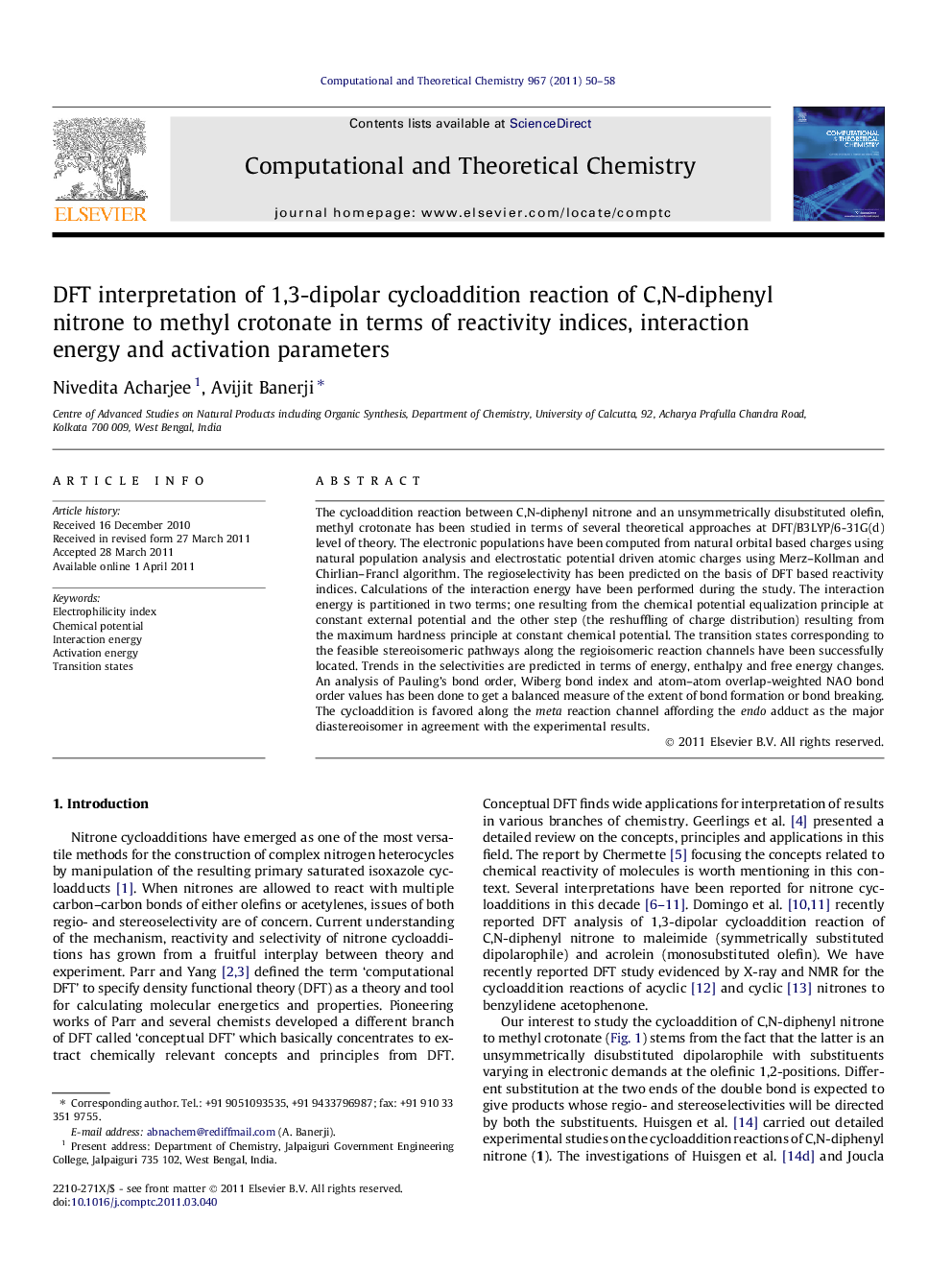| Article ID | Journal | Published Year | Pages | File Type |
|---|---|---|---|---|
| 5395122 | Computational and Theoretical Chemistry | 2011 | 9 Pages |
Abstract
The cycloaddition reaction between C,N-diphenyl nitrone and an unsymmetrically disubstituted olefin, methyl crotonate has been studied in terms of several theoretical approaches at DFT/B3LYP/6-31G(d) level of theory. The electronic populations have been computed from natural orbital based charges using natural population analysis and electrostatic potential driven atomic charges using Merz-Kollman and Chirlian-Francl algorithm. The regioselectivity has been predicted on the basis of DFT based reactivity indices. Calculations of the interaction energy have been performed during the study. The interaction energy is partitioned in two terms; one resulting from the chemical potential equalization principle at constant external potential and the other step (the reshuffling of charge distribution) resulting from the maximum hardness principle at constant chemical potential. The transition states corresponding to the feasible stereoisomeric pathways along the regioisomeric reaction channels have been successfully located. Trends in the selectivities are predicted in terms of energy, enthalpy and free energy changes. An analysis of Pauling's bond order, Wiberg bond index and atom-atom overlap-weighted NAO bond order values has been done to get a balanced measure of the extent of bond formation or bond breaking. The cycloaddition is favored along the meta reaction channel affording the endo adduct as the major diastereoisomer in agreement with the experimental results.
Keywords
Related Topics
Physical Sciences and Engineering
Chemistry
Physical and Theoretical Chemistry
Authors
Nivedita Acharjee, Avijit Banerji,
